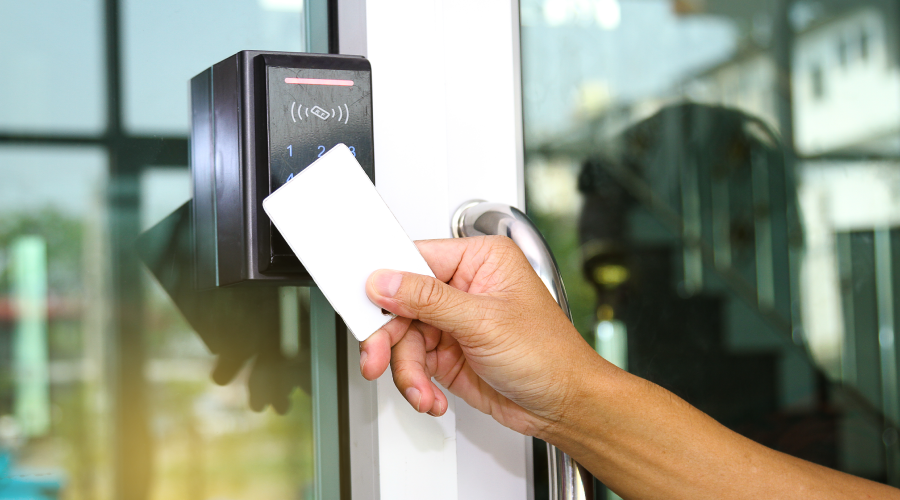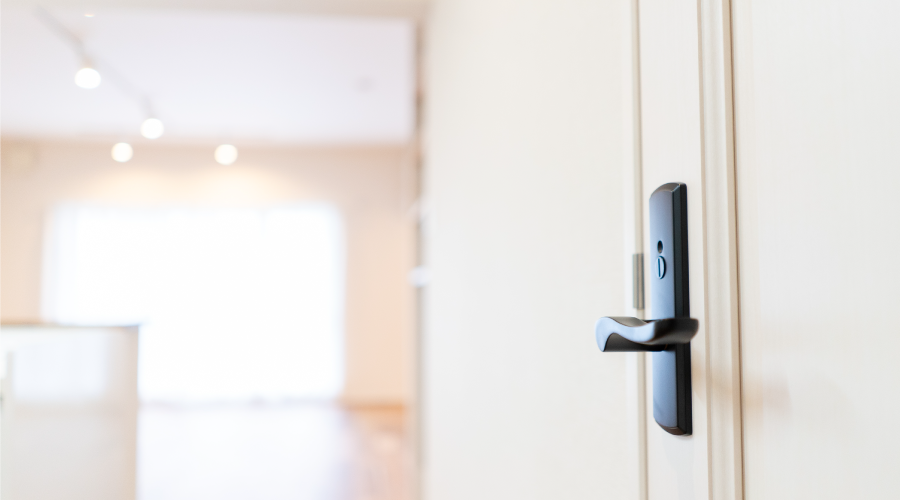Door Hardware: Most Common Repairs
As institutional and commercial facilities turn more of their attention to ensuring the safety and security of occupants and operations, maintenance and engineering managers also must make sure the door hardware components they specify for their facilities — including locks, hinges, handles, controls, and other access-control components — can withstand daily use and abuse.
By streamlining and fine-tuning their departments' installation, inspection and maintenance activities, managers can ensure that newly specified products provide both the security benefits and long-term performance facilities demand.
Performance Checks
At some point in their performance lives, most door-hardware components require maintenance, due to general wear and tear from regular use, and sometimes abuse. Common types of repairs for door-hardware components include lubrication, adjustment, alignment and weather sealing.
Technicians should lubricate key components once every six months to a year, depending on the type of door and its level of use. Hinges and door closers might require a few drops of penetrating oil at the top so it runs down into the wearing surface between the pin and the housing. Technicians can use dry graphite from a spout-type bottle on lock mechanisms requiring lubricant.
This step prevents freezing of door hardware in cold weather, besides simply providing lubrication. The best time to schedule lubrication is just before cold weather starts. One caveat: Technicians should not lubricate electronic locks because graphite is an insulator, so it will interfere with the current flowing through the contacts.
The two parts of a door that most often require adjustments are hinges and closers. While lubricating door hardware components, technicians should ensure that hinge screws are tight. In time, wood doorframes can dry out, and screw holes can open up to allow the screw to continue turning. If this happens, technicians should fill the hole with a hardening filler, redrill the hole, and replace the screw or place a screw insert in the hole, then replace the screw.
Door closers operate either pneumatically, using air, or hydraulically, using oil. Because of ongoing use, a door will begin to bang against the stop, or it will fail to close completely. Technicians can correct this problem by adjusting the screw on the cylinder. This step regulates the stroke so the door closes gently against the stop without banging or leaving a gap.
Technicians probably will not have to perform this job, so the operation of each different type of closer or lock in a facility will be only vaguely familiar, even if the same person does it every year. To ensure efficient maintenance of closers, managers can file these components' installation and adjusting instructions at the time of installation, then give them to the tradesperson when making the preventive-maintenance assignment. This step will save technicians a great deal of time at the job site trying to figure out the way a given mechanism works.
Related Topics:














